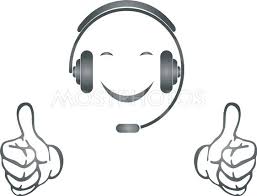WRITING with TECHNOLOGY
- Big Whiz

- May 7, 2019
- 8 min read
Updated: May 15

Hello everyone! I wanted to get back to focusing on writing in the blog. The Q2 site is for everyone, but since we concentrate our efforts on writers, readers, and artists, we will frequently return to things that will assist members in those roles. However, rest assured that we will cover a wide-range of topics in this blog. Now let’s get to it . . .
Speech-to-Text . . . What is it?

Speech-to-text software takes audio content and transcribes it into written words for a word processor or other display medium. If your daily schedule is as crammed full as mine, then you understand how difficult it is to dedicate time to writing or any other creative endeavor. I find myself continually searching for advancements and new technologies that may help streamline my writing processes. Don’t misconstrue what I am saying though. I love the old school writing combination of a writer, their thoughts, a pen and paper working together to bring a vision to life. It is my belief that a writer should be as at ease and familiar with his pen and pad as he is with his thoughts. A city bus driver must know his bus, his routes, and the limits of his driving abilities. He would be unwise, however, to refuse a new rear-view backup cam and the most advanced anti-lock braking system just to keep with traditional methods. His wisest choice would be to combine the two spheres of old and new methodology.
My pen and pad are a constant, but I have found that speech-recognition software can help greatly with time constraints and deadlines. The way I see it; our old school writing processes are manifestations of our discipline . . . our sacrifice to the arts if you will. Once we have paid our dues and firmly established our discipline, the rest of the journey is about customizing our processes to fit our needs. Time Management is a factor in this just as it is an any of our endeavors. Technology is here to enhance our abilities. When adding advancements to our normal routines serves only to slow us or becomes an aggravation, it must be discarded.
Without naming the brand, I will tell you that my first attempt to incorporate a speech-to-text application turned into such an aggravation. Two days of sheer frustration followed the unpacking of my new software. Keep in mind that this was a bit earlier in the continual development of speech-recognition advances. The software would not function as stated in the eye-catching full-color ad. Their customer support and I got a lot more in-depth with each other than is healthy. Finally, we agreed that the software I’d received was faulty. When offered the choice of a refund (minus the restocking fee of course), or a replacement shipment, I hastily chose the refund. The technology would have to grow before I would be ready to try it again. My trust had been violated . . . hell I had been violated. Thankfully this was about 10 years ago, and speech-to-text innovations are far more advanced. So hopefully you won’t have the same bad experience that I had on your first attempts.
Once the bad taste in my mouth had subsided, I wanted to give the speech-to-text another try. I knew that it still held great possibilities for me. I discovered that Windows 10 has its own speech recognition options available. I will go into detail about the Windows options for this a little later in this blog. One of my veteran friends, who is disabled, and wheelchair bound, started showing me the JAWS and Dragon software that was purchased for him by the Veteran’s Administration. He was so in love with how the software became an almost flawless, natural extension of his own capabilities. He totally convinced me that I had to research more into the technology and the brands that offered the software.
People tend to confuse the terms used most often to describe individuals with limitations. A disability is the result of a medically definable condition that limits a person’s movement, senses, or activities. While a handicap is a barrier or circumstance that makes progress or success difficult. Quadriplegics who cannot use their hands are disabled and have the handicap of not being able to type. Utilizing the speech-to-text applications means that they still have the disability, but the handicap of not being able to type has been removed.

As crazy as it sounds, another set of terms that is often mixed up are text-to-speech and speech-to-text. A rule to keep in mind is that if the computer is speaking it is text-to-speech. This is whether it is reading typed words, telling you the time, or reading a book. As previously explained, speech-to-text is where you speak, and the software converts your spoken words into text. Your “Okay Google” command in Google Voice is an example of speech-to-text technology that turns the converted text into voice commands for the search engine to follow. Apple’s Siri works in the same way.
How it Works
Using voice recognition software is becoming far easier and more widespread, but most of the people utilizing it are clueless to how it functions. When we speak, vibrations are created. This vibration is recognized as an analog wave. An Analog to Digital Converter (ADC) translates this wave signal into digital data that a computer can better understand. This process “samples” the sound by taking precise measurements of it at frequent intervals. The digitized sound is then filtered to remove unwanted noise, and sometimes to separate it into separate frequencies. The sound is then adjusted to a constant volume level and to match the voice speed of the samples already stored in the system. Next the signal is divided into segments as small as a few hundredths or thousandths of a second (known as phonemes). These phonemes are then matched in the correct language. They then must be examined by the software program in context with all other phonemes around them. Once the proper contextual phonemes are identified, a statistical model compares them to a very large library of known words, phrases, and sentences. The program can then determine what the user was most likely saying. From there the program either outputs text or commands for the computer to follow. All of this is accomplished in an instant, from the moment your words are spoken into the microphone.
*There are only 44 phonemes in the English language, consisting of 24 consonant sounds and 20 vowel sounds. The different combinations of consonants and vowels add up to the 44.

Since the voice command feature has been added to Apple, Mac, and Windows Operating System software (and many open source OS's as well), I want to delve into the options available in the Windows 10 OS.
Windows Speech Recognition allows users to control their computers with their voice and without the need for a keyboard or mouse. There is a built-in wizard to get you started. Plug in your microphone, and in the search box on the taskbar type "Speech Recognition," and then select "Windows Speech Recognition." Once you have completed the wizard, you have the option to run a tutorial on voice command and how to train your PC to recognize your voice. Windows 10 Speech Recognition (WSR) was originally developed for the Vista operating system. It allowed users to utilize voice commands to control the desktop user interface, dictate text in email and documents. Voice commands can also be used to navigate sites, perform keyboard shortcuts, control the mouse, and in creation of custom macros to perform additional tasks.
*For more in-depth information about Windows 10 Speech Recognition
*Here are some additional links for setting up and using Voice Recognition in Windows 10
\
There are lots of grammar and language checking application options available to writers these days, but I wanted to take a look at the latest trending one; Grammarly. Of course I will also provide links to other checker options at the end of this section. Let's get into it . . .

Grammarly is an online platform that detects potential grammar, spelling, punctuation, word choice, and style mistakes in writing. Released in 2009 for Grammarly Inc, it is available via extension for Chrome, Safari, Firefox, and Edge browsers. Grammarly is also available as an app for both iOS and Android. A pay-as-you-go premium service is available for a monthly or annual payment. The application flags potential mistakes in text and suggests context-specific corrections for grammar, spelling, wordiness, style, punctuation and plagiarism.
Writers already know how challenging and embarrassing it can be to bang out a document, complete the review process for spelling and grammar, and still have mistakes discovered by a third-party. Spelling and grammar checkers are not only popping up in the form of various apps but are also built-in to word processors or document editors like Microsoft Word. You may be asking yourself, "Why even use it if spell checkers are so common in text editing packages anyway?" Remember that we are creating our best work and striving to become the best writers we can be. When we hear world-class sprinters speak on gaining a second or two on their competition, they aware that any advantage cannot be passed up. This is especially true when we realize that most races are won or lost by a matter of milliseconds. Writers who are seasoned in their genre know that creating their best work requires their God-given talent and any other advantages they can gain in any related area. If you are a writer who normally has a home filled with energetic, screaming kids and out of the blue a cousin offers to give you a reprieve for two days, you would be remiss not to take it. This is the mindset we must adopt if we are to truly "Write without Ceasing!" The same holds true for using Grammarly. Yes, we could simply stick to using the regular old spelling and grammar checkers, but we would miss out on the advanced options like checking for plagiarism. All writers should realize the importance of this. Just as we want credit for our literary creations, so do other authors. Grammarly is so customizable that some writers use it like a word processor and type directly into it. They then copy and paste from it into text fields. The only limits for utilizing Grammarly are the ones we create for ourselves. It is already being adopted by a full-spectrum of writers. Everyone from professional authors and students, to social media commenters are finding ways to adapt it to fit their needs.
*Here are some links that provide more information on Grammarly as well as some of its competitors. Bare in mind that I am in no way an affiliate or payee of any of these products. I am simply providing a service to writers, readers and artists. I hope that these tools serve to enhance you and your writing experience. As always you are encouraged to share any testimonies, comments, or thoughts about using any of these tools. WE WILL HELP EACH OTHER BECOME BETTER! WRITE WITHOUT CEASING!"







Thanks so much for the info Virgy! 💪🏾